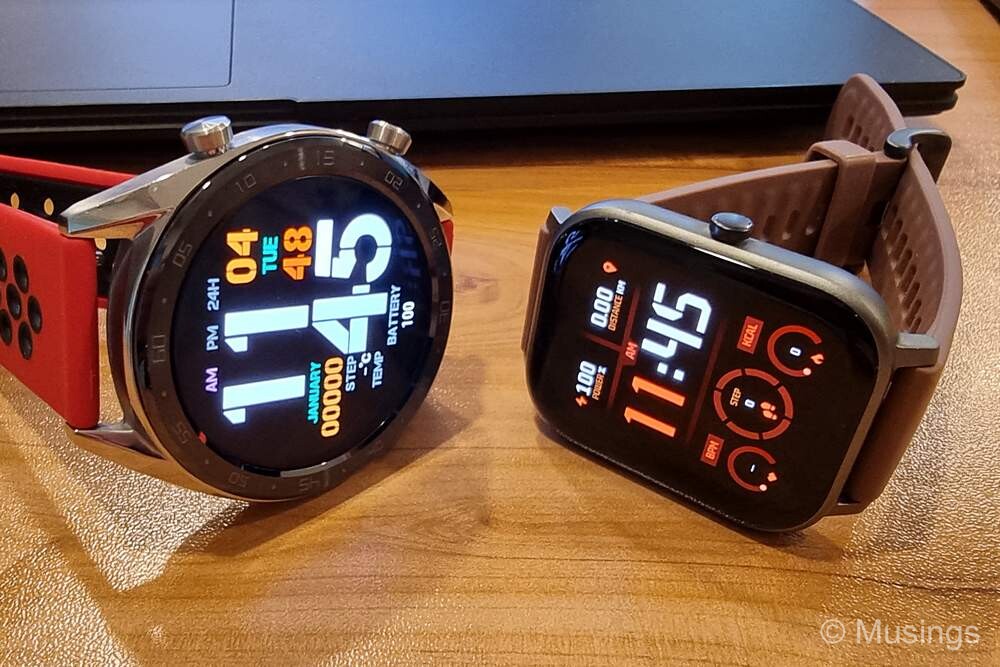The wife was a little distressed again over Christmas last year. Specifically, every year, she racks her brain thinking what to get me for Christmas, and unfortunately, more often than not, it’d be something that ends up getting sold away. Just for record’s sake: the Christmas and birthday present misses have included the original first generation Asus Android Transformer tablet, the original Samsung Galaxy Watch; and this year, that list now also includes the Samsung Galaxy Watch 4 Classic – all of which got sold away as brand new items. I reckon this is in part that it’s just tremendously difficult to buy electronic gadgets for someone who is already familiar with what’s available out there – and if it’s something that I really like, I likely wouldn’t wait for it to arrive as a present anyway! So, it’s basically me and my high needs/expectations when it comes to tech toys really. But also, when the missus gets something that I like, it’s rock solid: e.g. like the original LG G Watch R in 2014, or the Oculus Quest 2 that she got me last year.
Anyhow, for last year’s Christmas, she’d picked the Watch 4 Classic – that super-expensive, best Android smartwatch you can buy – if you have a Samsung Galaxy phone (which I have, and specifically the S21 Ultra) and you want a Google Wear OS watch. And therein was the problem: despite the great functionality that Google’ latest iteration of Wear OS – version 3 – brings about and that Samsung has implemented it well, Wear OS watches still suffer from the one limitation that I simply cannot get past: abysmal battery life. Ok, Samsung’s offerings are still better than the original Huawei Watch from 5 years ago and the current Apple Watch – but not by much. And having spent the last 3 years with the two watches I’ve been wearing regularly and whose batteries can last for at least 5 days per use – i.e. the Amazfit GTS and the Huawei Watch GT – it’s just hard for me to go back to watches which I have to take off and charge each night.
Here’s the list of watches I’ve owned at this point, and my comments for each:
LG G Watch R (2014): the first smart watch, and also a birthday present from the missus. Large, clunky, and with the battery life issues that still plague Android watches today. The watch has been dead since 2016.
Huawei Watch (2016): came at a time where the smartwatch market was dominated by just two options: Apple’s offerings, or what was running on Wear OS. The original Huawei Watch was an elegantly designed dress watch, and full featured. Battery life was even poorer than the LG G Watch R – it could barely make it through a day each use, and the supplied magnetic charger was finnicky: it required precise placement of the watch contact points in order for it to start charging.
Samsung Gear Sport (2018): I loved the rotating bezel, and it still remains the only smartwatch I’ve had so far that accurately registers the number of star case flights I climb at work! Battery life was slightly better at 2 days each charge, performance using the Tizen OS was fluid, and the watch charged wirelessly. The Gear Sport is no longer usable though: the watch can no longer charge, so it’s been in the drawer since last year.
Amazfit Bip (2018): was an impulse buy. This cheap wearable has a battery that runs forever – relatively speaking – and has all the basic health and notification functionality. It’s also really light – I can barely feel it on my wrist.
Huawei Watch GT (2018): easily my favorite wearable so far. This 3 year old watch still works well, and the stainless steel version I got is built like a tank: it still looks new, despite it accompanying me on four overseas trips. The watch though has been surpassed in hardware, and the lag and stutter in watch UI are particularly noticeable compared to the performance fluidity of today’s smartwatches.
Amazfit GTS (2020): I’ve alternated between wearing the Watch GT and the Amazfit GTS over the last two years. This GTS is much lighter on the wrist compared to the Watch GT, has the same basic health and notification feature set, but needs to be charged more frequently at 4-5 day intervals. The GTS’ screen is also scratched now though, compared to the GT which is still pristine. I reckon Huawei made use of tougher glass to protect the GT’s display!
On top of the above five, I also picked up the Huawei Watch Fit, and Huawei Band 6 for the missus and daughter last year. Both are quite pleased with it.:)
Upon selling the Watch 4 Classic, I went about exploring my options for a new wearable for 2022, and finally settled for one of these three: Amazfit GTR 3 Pro, TicWatch Pro 3 Ultra, and the Huawei Watch GT 3. The Amazfit GTR 3 Pro is chunky with a huge display screen, and has more/less the same feature set as the GT 3, and is similarly priced. But what finally swung me against it was the build quality, and that several users have reported that Amazfit’s Zepp OS is buggy. The TicWatch is – oh my – a Wear OS wearable. But it has something the Watch 4 Classic doesn’t have: an ultra-long ‘essential’ battery mode that will keep it running to 45 days, thanks to its dual display technology. This mode though would disable all of the watch’s ‘smart’ features, and if enabled, would still keep its battery life to just around 2 and maybe 3 days – just barely longer than the Watch 4 Classic. Bummer.

So, it was the Huawei Watch GT 3 then – and I’d had great luck with the first iteration. More in the next post!
Recent comments